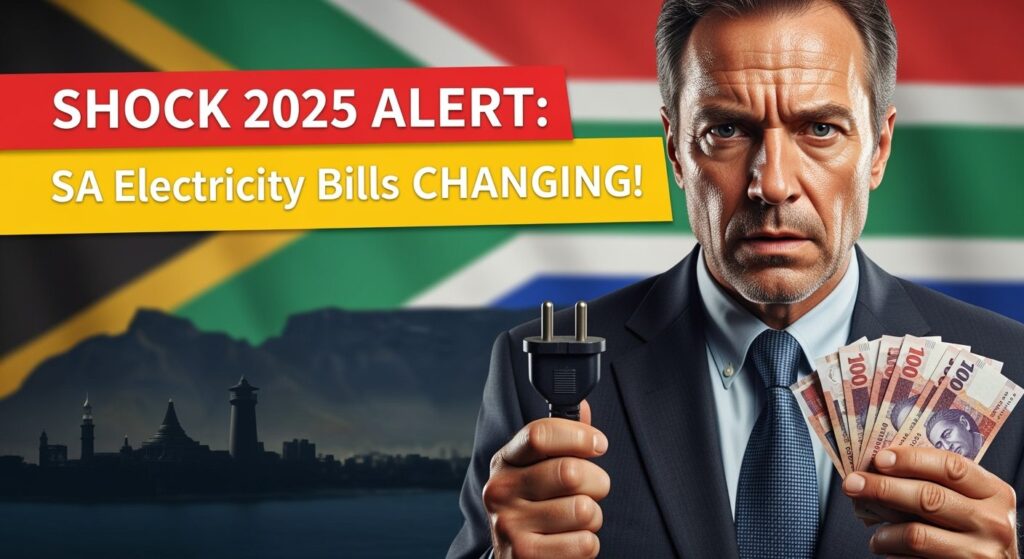South African electricity regulations: As we approach September 2025, I want to make sure you’re prepared for the significant changes coming to South Africa’s electricity sector. The new regulatory framework will affect how you consume, pay for, and even generate electricity in your home or business. These electricity regulations across South Africa represent the most comprehensive overhaul of the power sector in over a decade, aiming to address the ongoing energy crisis while promoting sustainability and fair pricing. But what exactly do these changes mean for the average consumer, and how can you ensure you’re compliant with the new requirements? Let’s break down everything you need to know about these upcoming changes.

What Changes Are Coming in September 2025?
The new South African electricity regulations will introduce several key changes that directly impact consumers. First, there’s a revised tariff structure that aims to make electricity pricing more transparent and cost-reflective. This means your bill will likely look different, with separate line items for generation, transmission, and distribution costs. Second, all households consuming more than 800 kWh monthly will be required to install smart meters by December 2025, allowing for real-time consumption monitoring and enabling time-of-use billing. Third, the regulations establish new rights for independent power producers, potentially creating more competition and choices for where you purchase your electricity. Finally, there are new provisions for grid-connected home solar systems, including standardized feed-in tariffs for excess power you generate and sell back to the grid.
Why These Regulatory Changes Matter
These electricity regulations across South Africa aren’t just bureaucratic reshuffling—they represent a fundamental shift in how the country approaches energy security and sustainability. The changes aim to address the persistent load shedding issues that have plagued the country for years by creating a more resilient and diverse energy ecosystem. For you as a consumer, this means potentially more reliable power supply in the long term. The regulations also support South Africa’s commitment to reducing carbon emissions by incentivizing renewable energy adoption. From an economic perspective, the new competitive framework could eventually lead to better pricing as more players enter the market. Most importantly, these changes give you more control over your energy choices and consumption patterns, potentially helping you reduce your monthly expenses if you adapt strategically.
How to Prepare for the New Regulations
Getting ready for these South African electricity regulations doesn’t have to be overwhelming. I recommend starting with an energy audit of your home or business to understand your current consumption patterns. This will help you anticipate how the new tariff structures might affect your bills. Next, consider budgeting for a smart meter installation if you’re in the higher consumption bracket—while there will be an initial cost, the insights gained could help you optimize usage and save money long-term. It’s also worth exploring whether solar installation might make financial sense under the new feed-in tariff system. Many banks are now offering special green loans with favorable terms for renewable energy investments. Finally, stay informed by signing up for updates from your local municipality and the National Energy Regulator of South Africa (NERSA), as they’ll be providing guidance throughout the transition period.
- Review your last 12 months of electricity bills to understand your consumption patterns
- Research approved smart meter providers in your municipality
- Calculate potential savings from time-of-use billing by shifting heavy electricity usage to off-peak hours
- Consult with a certified energy advisor about compliance requirements for your specific situation
When Will These Changes Take Effect?
The implementation timeline for the new electricity regulations across South Africa follows a phased approach. The initial regulations will come into force on September 1, 2025, but full compliance won’t be required immediately for all aspects. Smart meter installation requirements will begin in major metropolitan areas first, with a 90-day grace period, before expanding to smaller municipalities by early 2026. The new tariff structures will be implemented immediately upon the September launch date, so you’ll see changes in your billing from October 2025 onward. For home solar systems, the standardized feed-in tariffs will be phased in regionally, starting with Western Cape and Gauteng in September 2025, and reaching nationwide coverage by March 2026. NERSA has indicated that there will be a six-month adjustment period during which penalties for non-compliance will be limited to warnings rather than fines.
Real-World Impact: The Cape Town Pilot Program
I recently spoke with Thabo Nkosi, a homeowner from Cape Town who participated in the regulatory pilot program that tested these changes in select neighborhoods. “Initially, I was concerned about the cost of the smart meter installation,” Thabo told me. “But after three months, I’ve reduced my electricity bill by nearly 22% by shifting my heavy usage to off-peak hours.” Thabo also noted that the new transparency in billing helped him identify that his water heater was consuming far more electricity than necessary, prompting him to invest in insulation that further reduced his costs. The pilot program demonstrated that while there is an adjustment period, consumers who actively engage with the new system can find significant benefits under the regulatory changes.





